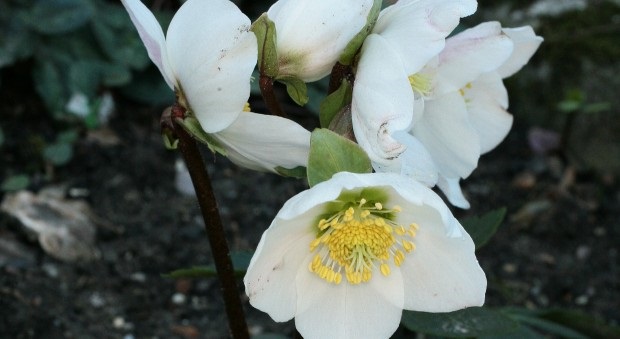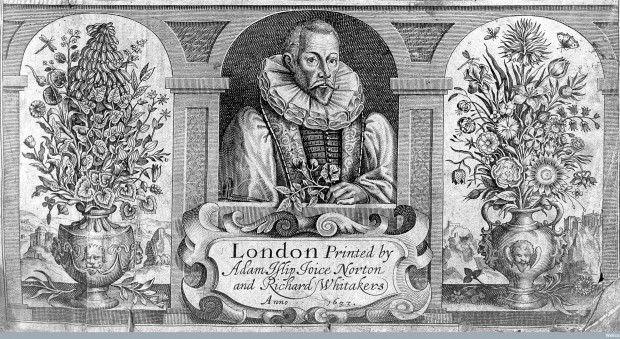Helleborus niger, also known as the Christmas rose, is a popular, appealing plant because it produces large, saucer-shaped flowers at a time when not much else is in bloom.
The Christmas rose is a clump-forming, fully-hardy, evergreen perennial with over-wintering, leathery, dark green leaves, 5–20cm long, comprising of lance-shaped leaflets, toothed towards the apexes. From early winter to early spring, stout, purple-marked stems bear shallow saucer-shaped flowers, singly or, occasionally, with two or three blooms. The flowers are white, sometimes strongly pink-flushed, ageing to pinkish white and are pollinated by bees and flies. As a cut flower, this is the only hellebore that stands reliably in water without drooping. It’s a small plant: it grows to 0.3 m high by 0.45 m wide, and likes heavy, neutral to alkaline soils in semi-shade; mimicking light woodland.


Another common name of this plant is Black Hellebore. According to Pliny, Black Hellebore was used as a purgative in cases of mania by Melampus, a soothsayer and physician. All parts of this plant are poisonous, containing cardiac glycosides, and may cause severe discomfort if ingested. The sap may irritate skin on contact and the root is anthelmintic (it destroys parasitic worms), emetic, emmenagogue (it stimulates blood flow in the pelvic area and uterus), violently narcotic and a drastic purgative.
The generic name of this plant is derived from the Greek, elein ‘to injure’ and bora meaning ‘food’, and is thought to indicate its highly poisonous nature. In Latin, niger means ‘black’ referring to the colour of the roots.
In the 16th century, John Gerard, gardener, barber-surgeon and author of the famous The herball or, generall historie of plantes, in which he wrote:
It floureth about Christmas if the winter is mild and warm … called Christe Herbe. This plant hath thick and fat leaves of a deep green colour … It beareth rose-coloured flowers on slender stems … there succeed small husks full of black seeds; the roots are many; with long, black strings coming from one end.

To propagate the plant, sow its seeds in containers in a cold frame as soon as they’re ripe. Lift and divide after flowering, in early spring or late summer. More commonly, the Christmas rose is left to go to seed (most species self-sow freely). H niger is easy to take care of in the right growing conditions. A word of warning, though: it can be susceptible to snails, aphids, leaf spot and black rot.
Sam Crosfield, assistant gardener
Over 1,000 species grow in the RCP Garden of Medicinal Plants: find out more about them in the plant database. The garden is open daily and tours are available.
Read our library, archive and museum blog to learn more about the RCP’s collections, and follow @RCPmuseum on Twitter and @rcpmuseum on Instagram.
